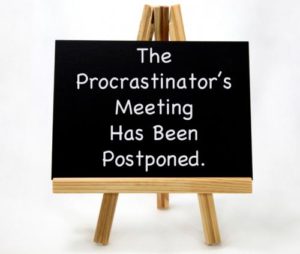Stop the ‘Meeting Madness’—Start Making the Time Meaningful Now!
Ever sat in a meeting and wondered what the heck you were doing there? I bet you have. Most everyone has experienced meetings that have felt like nothing other than a waste of time. Perhaps there’s no goal or real point—it’s like people are gathering just to say they met or to hear each other talk. If there is a real goal, perhaps there’s no formal structure or agenda, so little gets accomplished and, again, is a total waste of time. Every year, an estimated $37 billion is spent on unproductive meetings. If your organization or team is stuck in this costly and tiresome habit, stop the meeting madness now! Learn and execute strategies to make sure every minute of your meetings count.Here are five ways to make meeting time meaningful:
1. Tackle tardiness.
It may seem like no big deal that meetings often start 5 or 10 minutes late because people are tardy either in person or via a conference call. But if you were to add up all those lost minutes, you’d likely find that they amount to more time lost than realized—and lost time can culminate into a financial burden if left unchecked.When people are consistently late, it can be perceived as rude or disrespectful. Tensions can mount, hurting morale and hindering productivity.
If you’re noticing people are regularly tardy to meetings, tackle the issue. Ask attendees to be ready to start on time, not just arrive or call in on time. Ideally, people should be ready to go five minutes prior to the meeting.
2. Bring the “What’s the goal?” mindset to the table.
The most productive meetings are those that have clear goals communicated to everyone, ideally prior to starting. When people know the purpose, it creates greater definition and can enable you to develop a more strategic agenda.
Make sure the goals are specific, easy to grasp and well understood. Here’s an example: “In today’s meeting, I’d like to accomplish x, y and z within our two-hour timeframe. Does everyone understand the goals?”
3. Use a quick ice-breaker.
Ice breakers aren’t just about having a bit of early-meeting fun. They serve a number of purposes—they build a sense of teamwork, create engagement, build buy-in, energize the meeting from the start, and help people get to know each other. Ice breakers nurture relationships, communication and respect, all of which contribute to greater meeting productivity and meeting the agenda goals in a timely fashion.
4. Set and follow ground rules.
When it comes to professionally run meetings, ground rules are vital to establishing expectations around the meeting culture. At a minimum, ground rules support communication that makes people feel safe and respected, so they can better build consensus and make decisions.
Good ground rules are also preventive in nature—they address potential roadblocks to whatever could make a meeting meaningful and productive. They tell people what is and isn’t acceptable in terms of communication and behaviors and support the goal to ensure the meeting remains effective.
Buy-in around the ground rules is super important. How do you get that? By asking the participants to develop and approve the rules, rather than you dictating what should or should not be on the list.
Finally, you’ll want the list to remain visible at all meetings. If your organization has meeting ground rules that have been adopted, go to the effort to get these printed professionally on a poster you can hang up in conference or board rooms. Make sure everyone has a copy of the ground rules, not overlooking those who might be participating via web or conference call, as well as those who are guests to the meeting. Keep the ground rules on a common server so that everyone can easily access them for meetings as needed.
5. Role model expected behaviors.
As the organization’s leader, it’s essential that you follow the ground rules you and your people have established and lead by example. This may mean turning off or silencing your phone as hard as that may be. Or it could be avoiding the tendency to talk over others, dominating the meeting and undermining the sense of teamwork you’re striving to achieve. When people see you doing what’s expected of them, they will take the meetings more seriously, remain focused and likely be more productive themselves.
Good ground rules are also preventive in nature—they address potential roadblocks to whatever could make a meeting meaningful and productive. They tell people what is and isn’t acceptable in terms of communication and behaviors and support the goal to ensure the meeting remains effective.
Buy-in around the ground rules is super important. How do you get that? By asking the participants to develop and approve the rules, rather than you dictating what should or should not be on the list.
Finally, you’ll want the list to remain visible at all meetings. If your organization has meeting ground rules that have been adopted, go to the effort to get these printed professionally on a poster you can hang up in conference or board rooms. Make sure everyone has a copy of the ground rules, not overlooking those who might be participating via web or conference call, as well as those who are guests to the meeting. Keep the ground rules on a common server so that everyone can easily access them for meetings as needed.
What are some good ground rules for your meetings?Need help facilitating your mid-year planning meeting? Contact us today to have one of our Senior Consultants keep your team on track.



